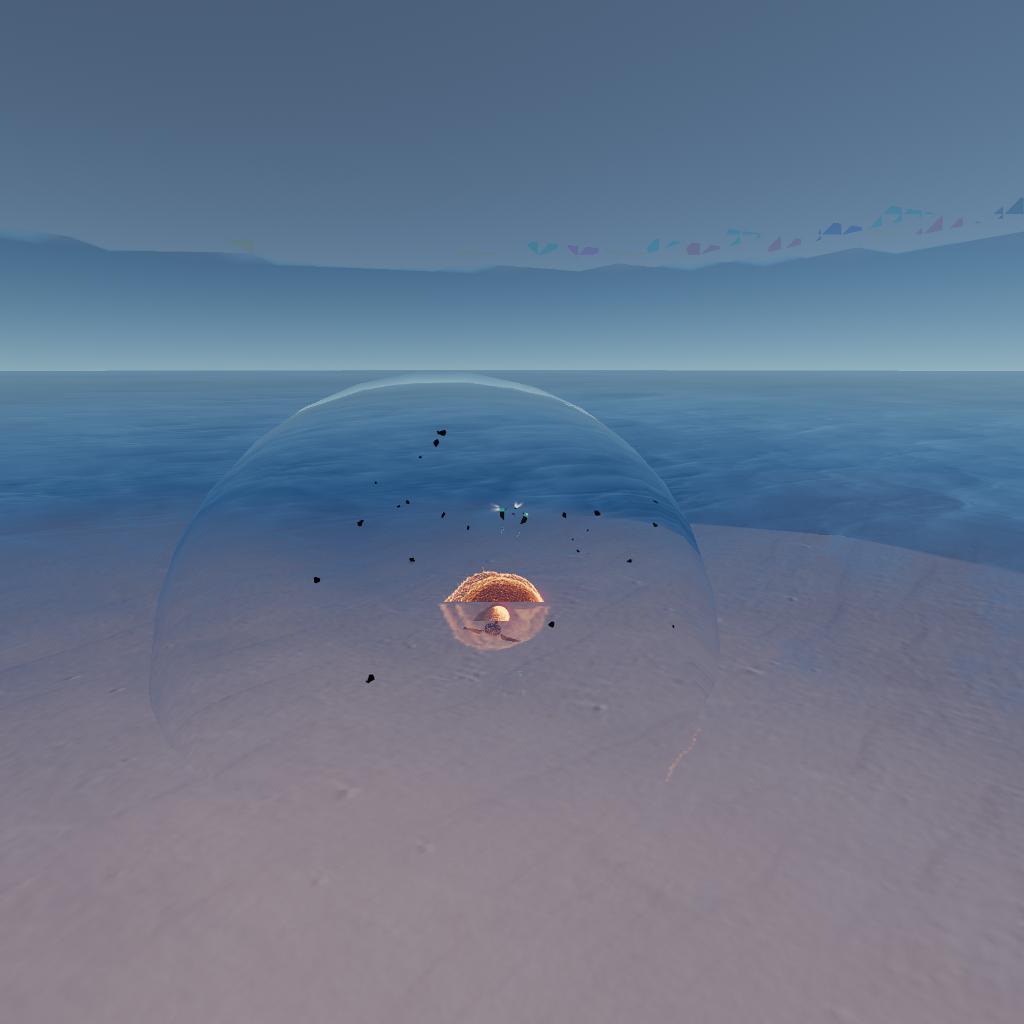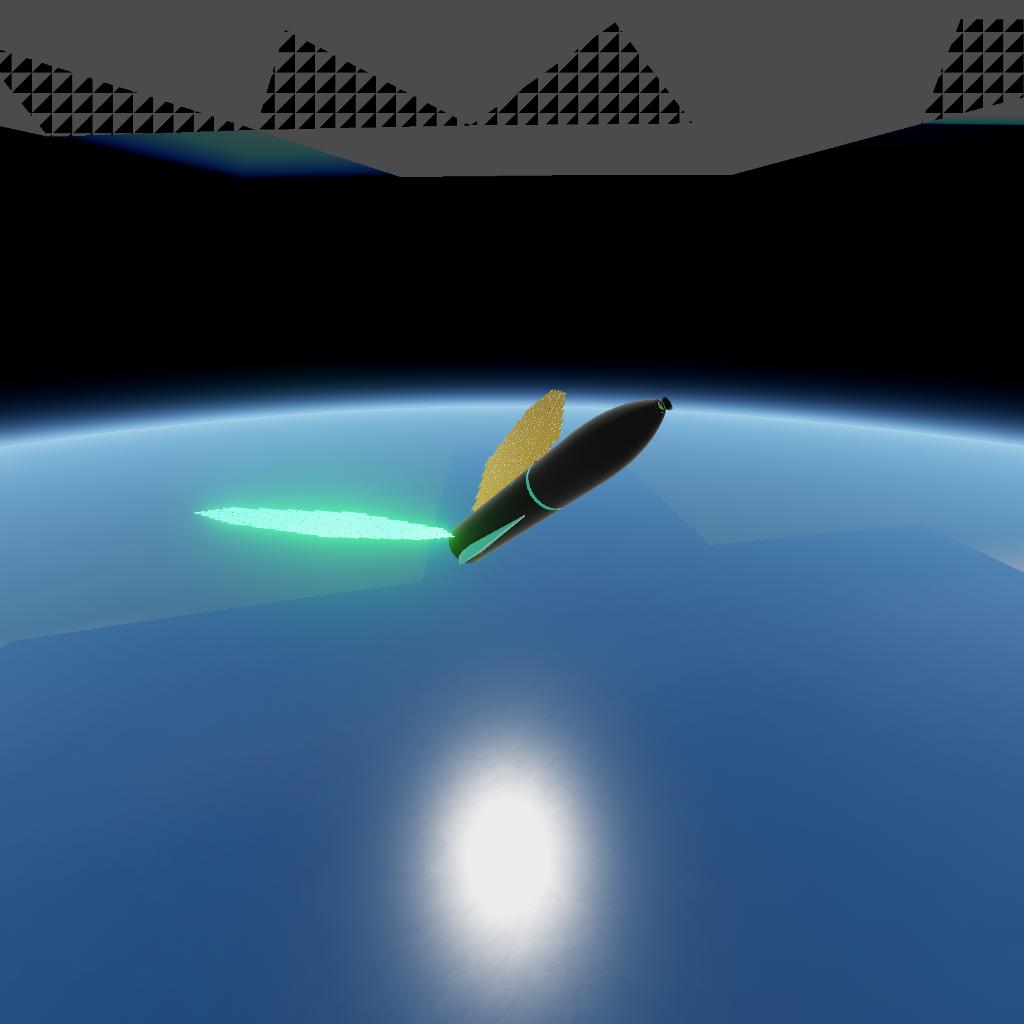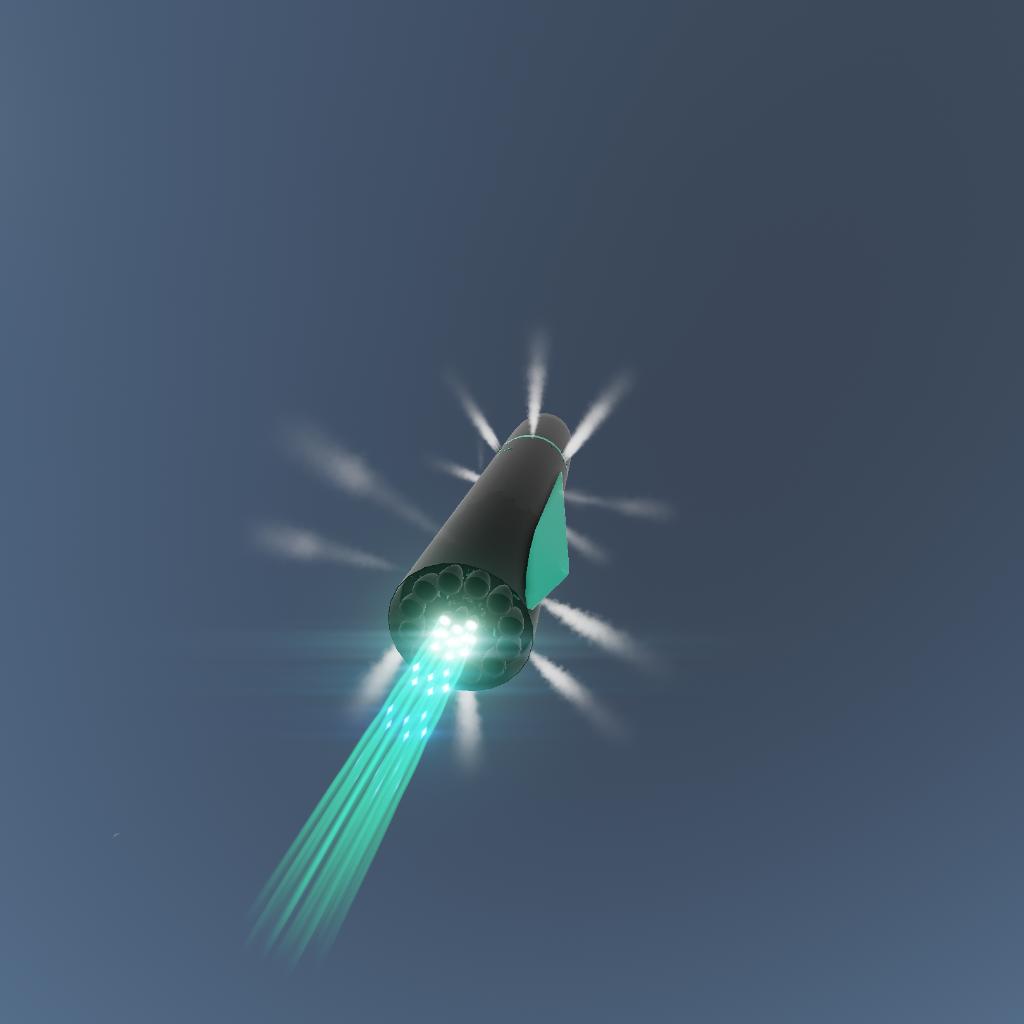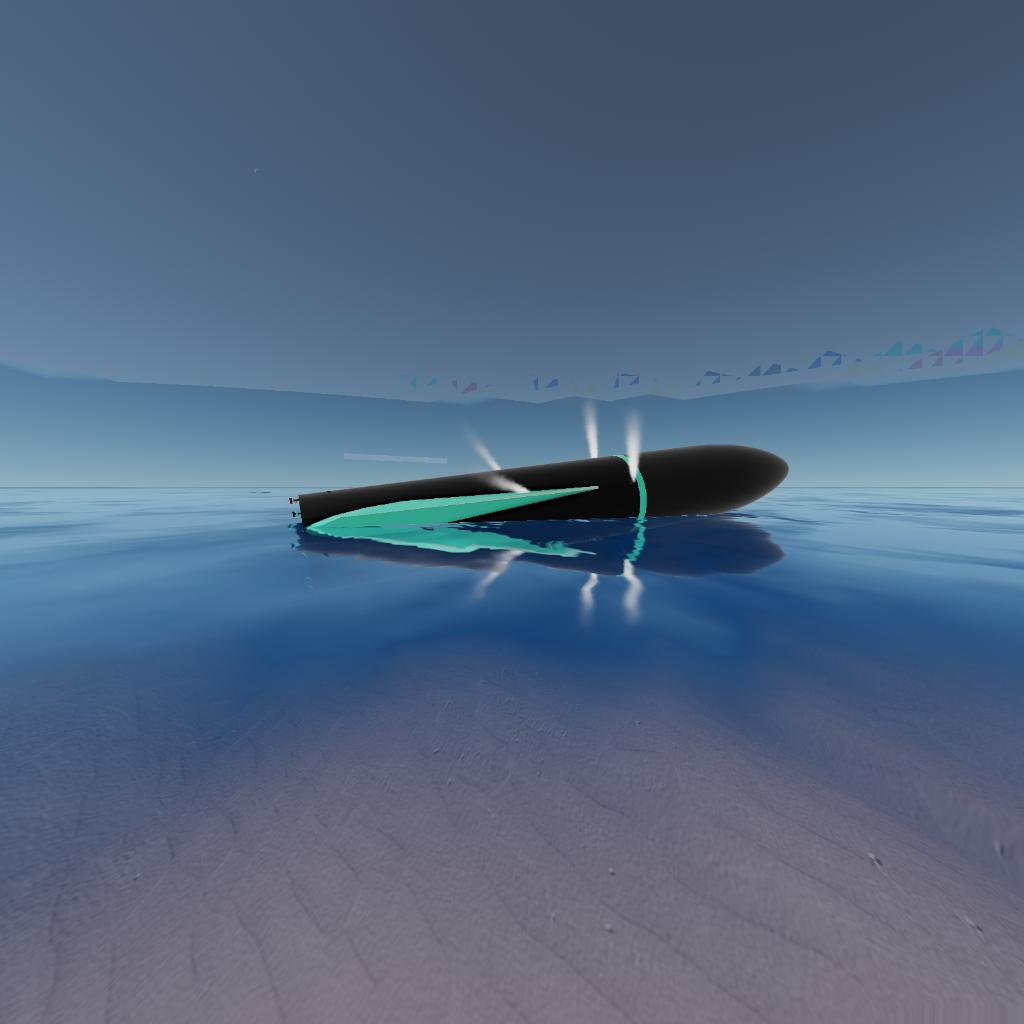On 19 June, CyberSpace’s first fully stacked Neptune rocket, consisting of Booster 2 and Ferry 4, lifted off for the first time.
Shortly after liftoff, 4 booster engines shut down.
At Max-Q, two of the booster’s canards were ripped off by the aeroforces. Thankfully, the two canards were opposite each other. Had they not been opposite each other, the rocket would have entered an uncontrollable spin, similar to that of SpaceX’s Starship IFT-1. Luckily, this didn’t happen. But, the canards struck the rocket after being torn off, altering its heading by 47°, meaning that the booster would come down in the ocean between England and Spain, rather than in the English Channel. And the Ferry came down between Africa and Madagascar, rather than off the west coast of India.
The booster successfully performed a boostback burn without any additional engines shutting down.
During reentry, a landing leg broke off the booster.
When the time came for the landing burn, 3 of the 19 engines that were supposed to light had shut diwn on ascent (the other engine was on an outer ring that was not meant to light for landing), and 11 of the 19 failed when they were supposed to reignite. Out of the 5 engines that reignited, only 2 got to full thrust before the booster crashed into the ocean.
After completing its burn, the Ferry deployed solar arrays and opened its docking nosecone to test orbital functionality after a full-scale launch. All orbital systems deployed successfully.
Just prior to reentry, the Ferry folded up and retracted its solar arrays and closed its docking nosecone successfully. During reentry, the Ferry pitched and yawed violently, tumbling through the air. It did not break up due to being actively cooled (having cryogenic LOX and Liquid Methane pumped through its walls to cool it). After reentry, the Ferry successfully regained attitude control and performed a belly flop, landing burn and splashdown. During the landing burn, only one engine shut down. The Ferry splashed down in the ocean between Africa and Madagascar at 11:30pm Local Time, 8:30pm British Summer Time.
The Media asked the CEO of CyberSpace, Rayne Murray, for their opinion on the mission and what CyberSpace would do to improve Neptune. Rayne Said “Well, our number one priority is to improve the reliability of the Helios Engine. We want to make them far more reliable and them test them until we get a 100% reliability rate from 250 separate static fires. On top of that, we also want to add heavy-duty RCS. I don’t know what the exact specs will be, we need to analyse the data further, but off the top of my head, I would say, like, maybe 5 tons (50kN) of thrust? They would only be used to maintain attitude control during reentry though, cause they’d drain the monoprop like crazy. We also want to improve the booster landing legs. We can already tell you with 100% certainty that the landing leg’s hinge was the weakest link there. The hinge wasn’t able to handle the aeroforces and it got torn off the rocket. We’ll probably replace the legs with fixed strakes of something like that. They’ll have more surface area for more body lift, so they’ll let us have more trajectory control on booster reentry. They also won’t require complex mechanical systems and will be lighter than foldable legs. We’ll also improve the canards, make them more structurally sound, and also change the shape to be overall better at hypersonic speeds, something like that. But, uh, yeah. Overall, the flight was a success. We got a bunch of data, experience, etc. Hopefully the next launch will be even better!”
GENERAL INFO
- Created On: iOS
- Game Version: 1.3.114.0
- Price: $58,852k
- Number of Parts: 184
- Dimensions: 117 m x 12 m x 12 m
PERFORMANCE
- Total Delta V: 61.6km/s
- Total Thrust: 88.9MN
- Engines: 81
- Wet Mass: 1.68E+6kg
- Dry Mass: 1.23E+5kg
STAGES
| Stage | Engines | Delta V | Thrust | Burn | Mass |
|---|---|---|---|---|---|
| 1 | 62 | 57.6km/s | 72.9MN | 2.0m | 1.68E+6kg |
| 2 | 12 | 2.0km/s | 10.2MN | 4.4m | 1.68E+6kg |
| 3 | 7 | 2.0km/s | 5.7MN | 7.6m | 1.68E+6kg |










@SaturnaAerospace lol